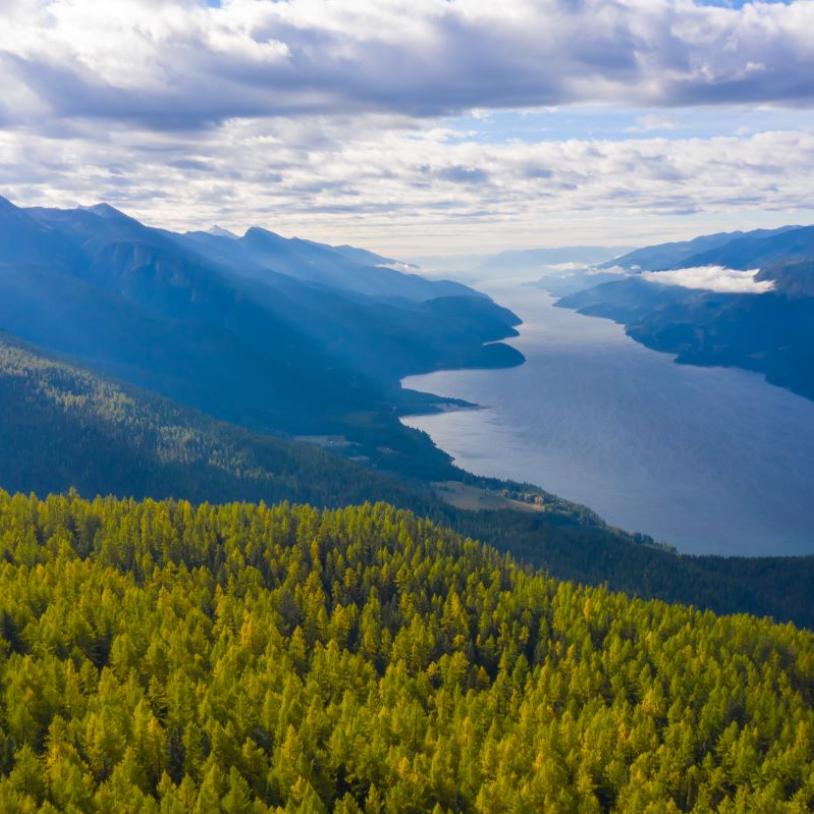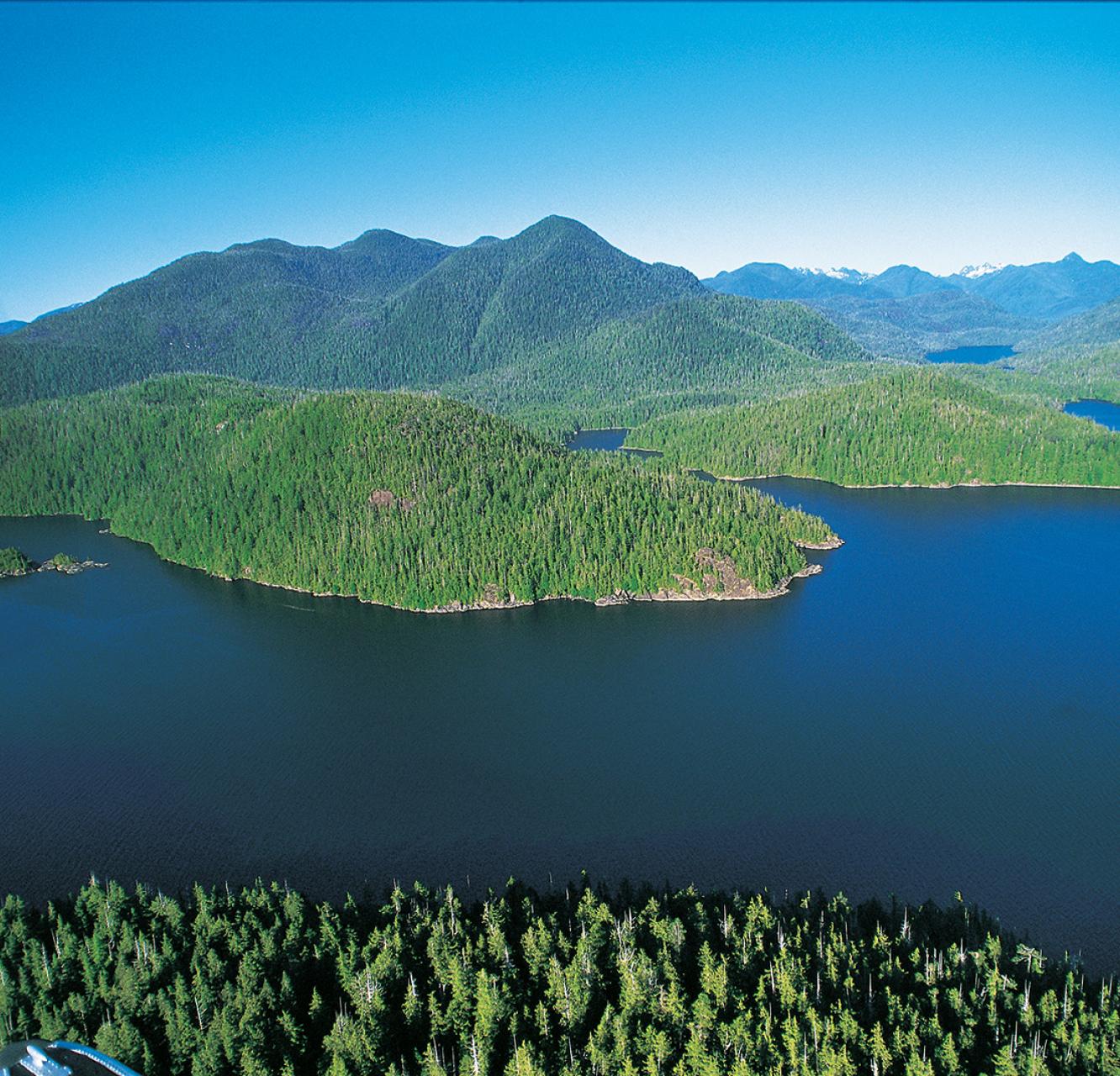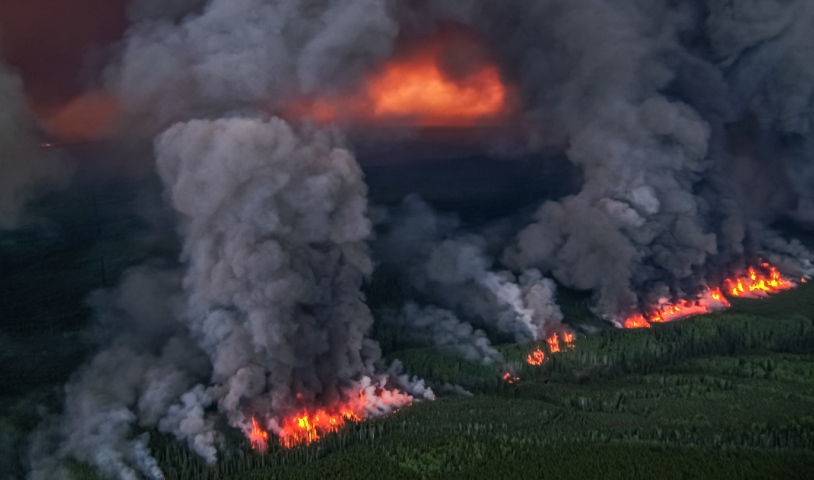“Clayoquot Sound is a place of wonder, one whose beauty takes the breath away. It fills you with a sense of our sacred responsibility as stewards of this very special place.”
Those were the words prime minister Jean Chrétien spoke on May 5, 2000, when he and B.C. premier Ujjal Dosanjh unveiled a plaque to mark the designation of Clayoquot Sound as a United Nations biosphere reserve.
That moment – together with the June, 1999, signing of a Memorandum of Understanding between environmental groups and a logging company owned by first nations – were the key events that signalled to the world the ancient forests of Clayoquot Sound were going to be protected. Forever.
Fast forward a few years and join Bonny Glambeck, a kayaking guide, as she glides across a green sea, rounds a point – and faces a scene of industrial activity few tourists expect to encounter in this place of wonder.
There, off one of the sacred islands in Clayoquot Sound, a huge self-loading barge is hauling aboard thousands of giant trees, cut from the flanks of nearby mountains.
“In the past five years ,the rate of cut has gone up dramatically. There’s lots of barges leaving the Sound loaded with old-growth cedar, hemlock, spruce. … It’s quite a shock to people,” said Ms. Glambeck, who owns Rainforest Kayak Adventures with her partner, Dan Lewis. The couple are now touring in B.C. and Alberta, with a slide show and lecture, to alert people to the threats facing Clayoquot Sound.
“People believe the Clayoquot UNESCO Biosphere Reserve is a park. It’s not,” she said. “The audiences have been gasping when we tell them what’s taking place.”
The title of their presentation, Secrets of Clayoquot Sound, refers to some of the environmental wonders they’ve learned about in more than 20 years of paddling on the West Coast. But it also refers to the dirty little secret that an area supposedly protected by the governments of B.C. and Canada is slowly getting carved up.
In 2000, the year Mr. Chrétien and Mr. Dosanjh unveiled the UN plaque, logging hit a long-time low in the Sound, with only 25,000 cubic metres of wood harvested, or about 757 truck loads. That sounds like a lot coming out of a biosphere reserve – but compare it with the numbers that existed before. In 1988, the equivalent of 29,000 truck loads of timber were taken from Clayoquot Sound. And in 1993, the summer more than 800 protesters were arrested for blocking logging roads, about 13,000 truck loads of wood were removed.
Through the 1990s, environmentalists fought against logging. But in 1999, a groundbreaking MOU was signed between Iisaak Forest Resources Ltd., an aboriginal company that holds cutting rights to the Sound, and five environmental organizations. Not everyone was happy, but it worked like a peace treaty, ending the war in the woods.
The agreement supports continued logging, but a key aspect refers to the protection of pristine areas, identified by aboriginals as eehmiis, or “very precious” places.
Last week, Joe Foy, national campaign director for the Wilderness Committee, was shocked to learn the provincial government had issued Iisaak a road-building permit on Flores Island.
“We see this as a violation of the MOU,” Mr. Foy said. “That road goes into an intact area on the southeast end of Flores Island. That is designated eehmiis. That is clearly out of bounds.”
Mr. Foy said his group is ready to once again fight to protect Clayoquot Sound.
“We’re thinking about stepping out of the MOU and treating Iisaak like any other logging company,” he said.
Iisaak denies it has violated the MOU, saying the agreement “did not permanently define areas to be reserved from harvesting.”
Maybe not. But the MOU clearly identified eehmiis areas, and it states the only activities allowed there will be eco-tourism, traditional culture uses, scientific research and the harvest “of non-timber forest products.”
The MOU isn’t legally binding. But if it is abandoned, the peace accord will be broken. Mr. Foy and Ms. Glambeck say the government should step in, before Clayoquot Sound once again becomes an international incident.
When Mr. Chrétien dedicated the UN plaque, he recognized government has a “sacred responsibility” to act as stewards of Clayoquot Sound.
Where is that sense of duty now?
Photo: Ancient redcedar tree on Flores Island





